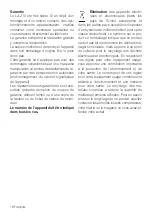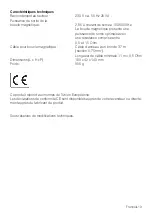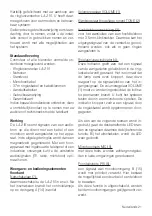
English 9
Congratulations on purchasing your
LA-215
loop amplifier
. You have chosen a modern
and reliable system.
Please read through these operating in-
structions carefully. They tell you how to set
up the system correctly and explain all the
system’s features to you.
Standard components
Please check if all following components are
included:
-
LA-215 loop amplifier
- Power cord
- Stand
- Microphone cable
- 37 m of loop cable and cable clips
- Connection cable set
- Operating instructions
- Guarantee card
If any parts are missing, please immediate-
ly contact your dealer or the manufacturer
directly.
How it works
The
LA-215
picks up signals from an audio
source that is directly connected with the
device with a lead or via a microphone.
A magnetic field is created in the loop. With
the help of a hearing aid equipped with an
integrated teleloop or an inductive receiver,
you can hear the amplified audio signals
(TV, radio, microphone) at the volume of
your choice.
Display and operating elements
Front panel
Power on/off (7):
Press this button to switch the
LA-215
on
and off. Once you have switched the device
on, the indicator will light up and the line in-
put jack A (14) is active.
Volume control VOLUME (1)
Tone control (treble/bass) TONE (2)
Headphone connection jack (3):
To connect a headphone with a 3.5-mm
jack. This makes it possible to check the
amplifier’s output signal even if a loop is not
connected.
LOOP LEVEL indicator (4):
This indicates that a signal is being trans-
mitted by the loop cable. It flickers with a
low volume and remains steady with louder
volumes. Testing the system can be done
by speaking into a microphone and seeing
the light flash, this will indicate that a signal
is flowing round the cable.
If one of the following buttons is pressed,
the corresponding light-emitting diode
(LED) will light up to indicate which function
has been activated. If the button is pressed
again, the indicator will go off.
Microfon button MIC (5):
Press this button to reduce the background
noise in noisy rooms.
Priority button PRI (6):
A signal detected on microphone input B
(15) will be treated as the priority signal. This
makes it possible to monitor a doorbell or
a telephone. If this function is switched off,
both microphone inputs will be processed in
the same way.









































